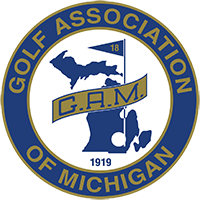LIBERTY CORNER, N.J., USA and ST. ANDREWS, Scotland – Golf Association of Michigan (GAM) members and golfers around the world are taking note this week in the wake of the USGA and The R&A announcing the first update to the World Handicap System™ (WHS).
The update is part of an ongoing review of the Rules of Handicapping™ and Course Rating System™ with a continued emphasis on accuracy, consistency and equity. The GAM played a small role in helping conduct a scoring and course rating study at two Michigan courses for the process.
The latest revisions will go into effect beginning January 1, 2024.
Many countries, including the U.S. and of course Michigan, have seen significant increases in the number of scores being submitted for handicapping purposes since the WHS was introduced in January 2020, reflecting golf’s broadening appeal.
More than 100 million scores have been posted each year, unifying millions of golfers through a standard measure of playing ability. The 2024 update leverages the performance data gathered from around the world, in addition to feedback received from many of the 125 countries now using the system.
Significant updates to the WHS include:
- Inclusion of Shorter-Length Golf Courses Within the Course Rating System: The overall length requirements for Course Rating in the WHS will be significantly reduced. A set of tees on an 18-hole course may be as short as 1,500 yards [1,370 meters] to be eligible for a Course Rating and Slope Rating®, and a set of tees on a 9-hole course may be as short as 750 yards [685 meters]. This change is intended to expand the WHS to thousands of shorter length courses, including par-3 courses, and enable more golfers to obtain and use a Handicap Index.
- Use of an Expected Score for a Hole Not Played: Improvements have been made to the method used to handle holes not played, which will now be based on a player’s expected score rather than a score of net par. This new method will produce a 9-hole or 18-hole Score Differential that more accurately reflects a player’s ability. As golfers across the world are playing more 9-hole rounds, an expected score can also be used to convert a 9-hole round into an 18-hole Score Differential. For some countries, this means that 9-hole scores will be considered in the calculation of a player’s Handicap Index immediately after the day of play, rather than waiting to combine with another 9-hole score.
- Playing Conditions Calculation Adjustments Made More Frequent: The Playing Conditions Calculation (PCC) has been modified to increase the likelihood of an adjustment for abnormal playing conditions. National associations were given discretion, beginning in July 2022, to introduce this revision within their computation platforms, which will be complete by April 1, 2024.
- Enhanced Guidance on Conducting a Handicap Review: The role of the Handicap Committee is vital to the success of the WHS and the Rules recommend that a Handicap Review is conducted regularly, or at least once a year to ensure a Handicap Index® remains reflective of a player’s ability. New reporting tools have been developed that national associations can incorporate into their handicapping software to assist Committees in conducting the review process effectively and consistently.
Since its inception, the WHS has embraced the many ways golf is played around the world by giving national associations flexibility to apply regional discretionary items, with the objective for greater alignment over time. For this reason, the governing bodies expect countries to continue to shift the way they calculate Course Handicaps so that they are relative to par, making a golfer’s target score to “play to handicap” more intuitive.
Drew Yntema, associate director of club services for the GAM, called the revisions great for Michigan golfers and those around the world.
“I think the USGA and R&A are always looking to make the rules more modern in any way they can,” he said. “The three things that we’re looking at with the changes that are coming in 2024 are the rules are looking to become more consistent for golfers, fairer for golfers, and in that process getting the information out to them in a timely manner better than when the 2020 rules were adopted.”
Yntema said the biggest change for golfers is the posting for nine-hole rounds.
“With the current rules, if you post a nine hole score, you don’t get that instant gratification of seeing that your Handicap Index has potentially changed,” he said. “Under the current rules you have to wait for another nine hole score to be added into your profile for that score to be updated. This will be timely and I think it can impact clubs and courses that have nine-hole leagues or just the golfer who plays nine holes because of time restraints. It makes things better right away.”
Hunter Koch, associate director of course rating for the GAM, called the revisions involving short courses a giant step forward and noted the GAM last summer participated in a study in association with member courses ThreeTops, a popular par 3 course at Treetops Resort in Gaylord, and Bay Meadows Golf Club in Traverse City.
“We collected scores at Treetops and Bay Meadows and then rated those courses as part of the study,” Koch said. “All these changes come from data the USGA and R&A collected, and for me the takeaway is that it makes the game so much more inclusive. The golfers who opt for the shorter courses, beginners, super seniors, juniors, whatever the case may be, are not only able to play a shorter course where they are comfortable playing, but they are able to get a handicap index and get more formally involved in the game of golf. And I believe that will help golf retain more of them as golfers in the future.”
Koch said the USGA estimates about 20 short courses are part of Michigan golf, and he believes it might be more. He also noted the construction of high-profile par 3 courses in the state, including one at The Highlands in Harbor Springs by Boyne Golf, and another at Saint John’s Resort in Plymouth.
“I think the trend of adding short courses will continue, and it appears the USGA and R&A think so too,” Koch said. “The biggest challenge now will be getting those course (owners, members) educated and convinced that having a short course rated can help build interest for people in playing those courses, too. About half of the par 3 courses are attached to a member club, and the other half are independent. We are going to have to take a two-pronged approach in getting the word out.”
Golfers are encouraged to visit the USGA website to learn more about the discretionary items that apply to their region. Contact details for national associations can be found on the WHS website here: https://www.whs.com/#association.
The USGA and The R&A have also recently launched a new WHS Software Accreditation and Interoperability Programme to help ensure that there is consistency and accuracy in the calculation of handicaps worldwide, and to assist with the retrieval of a Handicap Index and the return of away scores from country to country.
Steve Edmondson, Managing Director – Handicapping & Course Rating at the USGA said, “The game of golf continues to evolve and the WHS has embraced those changes in a dynamic way to help all golfers, everywhere they play. It is a monumental time in golf, and improving both the accessibility of obtaining a Handicap Index and leveraging powerful data and technology to easily and accurately track performance is a great step forward.”
The USGA and The R&A jointly launched and govern the WHS to provide a modern and responsive system that gives an accurate reflection of a player’s demonstrated ability. It is calculated by incorporating the Rules of Handicapping and the Course Rating System and is administered by a range of handicapping bodies and national associations around the world.
The more flexible and accessible nature of the system has led to the introduction of successful initiatives from a number of national associations aimed at making it easier to obtain a Handicap Index and be part of the WHS.
Mirroring the review processes of other areas of governance in golf, including the Rules of Golf and the Rules of Amateur Status, reviews of the WHS will continue to be conducted at regular intervals, taking into consideration performance data and feedback to help identify areas for improvement. To learn more about the World Handicap System, please visit www.WHS.com.
Editor’s Note: This is a USGA press release with additional GAM reports.















































